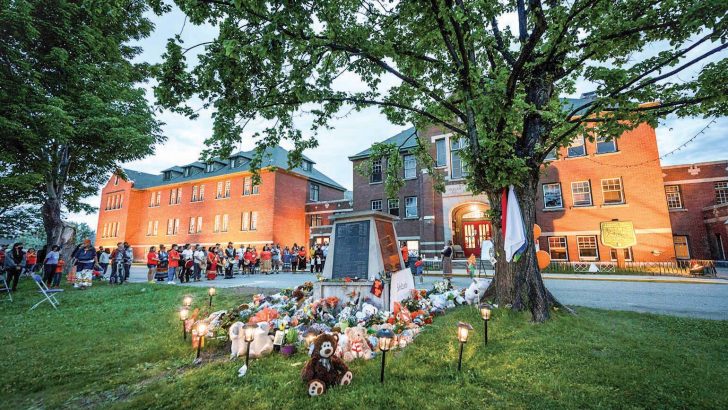Archbishop Michael Miller of Vancouver said he was “filled with deep sadness” after learning of the discovery of the bodies of more than 200 children buried on the site of what was once Canada’s largest indigenous residential school.
The Tk’emlúps te Secwépemc First Nation May 30 reported an “unthinkable loss” that was “never documented” at the former Kamloops Indian Residential School in Kamloops, British Columbia.
“We had a knowing in our community,” Chief Rosanne Casimir said of the discovery, which was verified with ground penetrating radar. Ms Casimir said in a statement that some of the 215 children were as young as 3 years old.
In a statement, Archbishop Miller called the news “troubling”.
“The pain that such news causes reminds us of our ongoing need to bring light to every tragic situation that occurred in residential schools run by the Church… we pledge to do whatever we can to heal that suffering,” he said.
Bishop Joseph Nguyen of Kamloops also expressed sadness over the discovery, saying “I humbly join so many who are heartbroken and horrified” by the news.
“On behalf of the Roman Catholic Diocese of Kamloops, I express my deepest sympathy to Chief Rosanne Casimir of the Tk’emlúps te Secwépemc Nation and to all who are mourning this tragedy and an unspeakable loss,” he said, offering prayers on behalf of the diocese for the First Nations community.
Half-staff
Flags were lowered to half-staff at the Vancouver Archdiocese main offices May 31. Students were invited to wear orange as a sign of support of reconciliation efforts in Canada.
Archbishop Richard Gagnon of Winnipeg, Manitoba, president of the Canadian Conference of Catholic Bishops, expressed sorrow for the loss of the children on behalf of the bishops in a statement May 31.
“The news of the recent discovery is shocking. It rekindles trauma in numerous communities across this land. Honouring the dignity of the lost little ones demands that the truth be brought to light,” he said.
Deacon Rennie Nahanee, former coordinator of the Vancouver Archdiocese’s First Nations Ministry Office and a member of the Squamish Nation, took part in National Truth and Reconciliation Commission hearings in Vancouver in 2011. He said he heard “sad stories” of how the remains of children were sent home from residential schools.
Several questions must be answered, Deacon Nahanee said, such as whether families were contacted upon the death of students, determining the government policy regarding deaths at the schools, and whether family names were recorded so remains can be returned to their communities.
The residential school opened in 1890 and was operated by Catholics and the Canadian federal government. It was the largest in Canada’s residential school system.
The school was one of five residential schools run by religious orders in the historical geographic boundaries of the Vancouver Archdiocese. In 1945, with the establishment of the Diocese of Kamloops, the school fell under the boundaries of the new diocese.
The school eventually ceased running classes and in 1969 the federal government took over administration. At the time it was being used as a residential building for students at day schools. It closed in 1978.


 Kamloops residents and First Nations people gather to listen to drummers and singers at a memorial in front of the former Kamloops Indian Residential School in British Columbia May 31, 2021. Photo: CNS.
Kamloops residents and First Nations people gather to listen to drummers and singers at a memorial in front of the former Kamloops Indian Residential School in British Columbia May 31, 2021. Photo: CNS. 